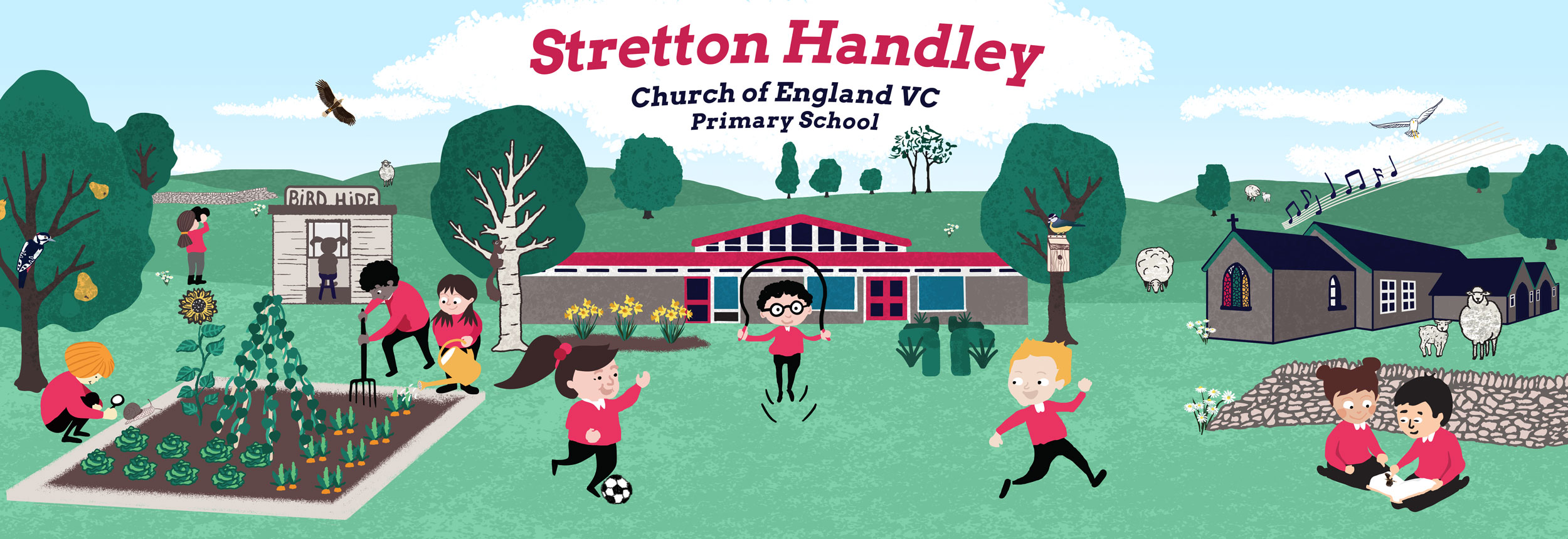Intent
At Stretton Handley CE (VC) Primary school, we are passionate about ensuring all children become confident and enthusiastic readers and writers. We follow a coherently planned sequence of lessons that supports the effective teaching of phonics within EYFS, KS1 and, where appropriate, KS2.
We recognise the importance of teaching a systematic, synthetic phonics programme to build children’s speaking and listening skills, as well as to prepare them for learning to read quickly and skilfully. It has a high priority throughout EYFS and KS1. Learners are systematically taught the relationship between sounds and the graphemes which represent them. The teaching approach is visual, auditory and kinaesthetic to appeal to all learning styles; therefore, increasing the likelihood of success.
In Reception, children work within Levels 2-4. Here learners are introduced to phonemes/sounds and graphemes/letters systematically. They also learn to develop and apply blending and segmenting skills for reading and writing.
Within KS1, children work within Levels 5 and 6. The coherently planned sequence of lessons within Level 5 allows opportunities for children to apply their phonics knowledge and skills as the prime approach to reading and spelling. It focuses on phonetically decodable two syllable and three-syllable words and the alternative ways of pronouncing and representing the long vowel phonemes. Furthermore, children will develop their ability to attempt to read and spell increasingly complex words. By Level 6, children explore spelling patterns and grammar while also developing a breadth of knowledge, skills and understanding in the recognition and spelling of common exception words.
The Twinkl Phonics Programme intends to not only provide children with opportunities to develop the knowledge, skills and understanding essential for reading and writing, but also, to develop each child’s confidence, resilience and engagement in phonics lessons and a love for reading and writing.
Implementation
The Twinkl Phonics Progression Map sets clear expectations for pupil’s progress within the Twinkl Phonics Programme. The dynamic and engaging materials delivered in the daily planning packs within Levels 2-6 ensure a clearly defined structure to the teaching of phonics. The direct teacher-led lessons enable all learners to develop and apply new skills while also providing opportunities to further apply these skills within fun and engaging activities and through continuous provision. The teaching PowerPoints, stories, games, additional texts and toolkits are meticulously planned to allow children to apply and practise phonics skills. They also offer opportunities to challenge learners and provide support to teachers and parents. The assessment documents allow teachers and practitioners to track pupil’s progress. It provides opportunities for data analysis and encourages discussions around pupil progress, group progress, future learning and misconceptions, enabling us to respond and adapt teaching within the programme to provide additional support and challenge to pupils.
Teacher guides for each stage are provided to allow teachers and adults working with children to feel confident in their own subject knowledge, knowing they are fulfilling the national phonics criteria and enabling each child to achieve their potential.
Impact
The impact of using our complete Twinkl Phonics Programme (including lesson packs, displays, weekly planning and parents notes), as the basis of your phonics teaching within EYFS and KS1, will be for children to develop their phonics skills and knowledge through a systematic, synthetic approach, while covering the statutory requirements outlined in the 2014 National Curriculum. The programme will prepare children for the statutory year 1 phonics screening check. Following the programme gives a consistent approach to phonics, which is clear to teaching staff and learners. Parental engagement can also be improved through the use of the parent guidance sheets.


